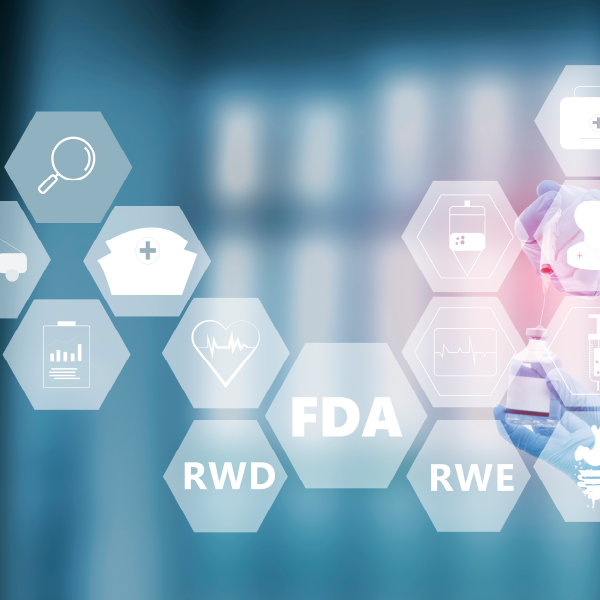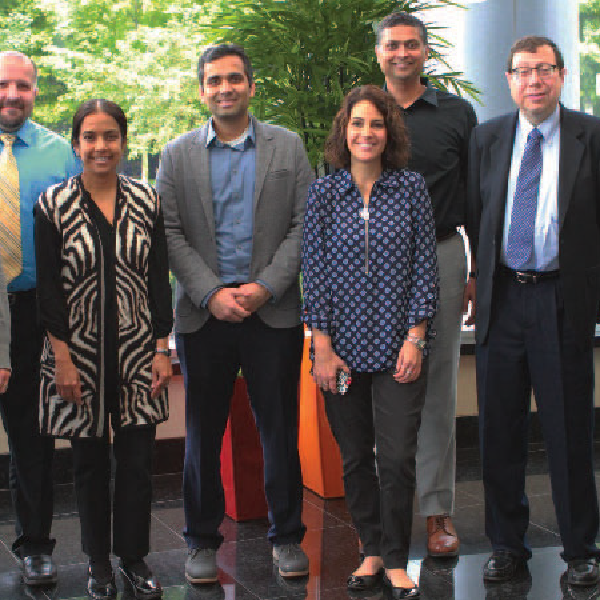Using Real World Data in Pharmaceuticals: A Conversation with Chris Hurley

The idea and practice of using real world data in the pharmaceutical industry has driven much conversation as of late. As groups like the Health Analytics Collective begin to bring game-changing methodologies to the marketplace, we sat down with Chris Hurley, Associate Director, Data Sciences with MMS – co-founder of the Collective – to get a sense of what the future holds.
What is your role in the Health Analytics Collective?
As head of data sciences at MMS, I have led our team through the development of a robust data science methodology in support of the Collective. It is my job to ensure that any project application development will comply with the relevant internal SOPs and Work Instructions, based on our methodology.
Additionally, I help ensure that the team has the appropriate data science support, from discovery engagement at the beginning of our process through data engineering, data analysis, and analytics. This includes asking the right questions of the data and progressing until we create useful insights and/or actionable information and alternatives for client sponsors.
Why do multiple parties need to be involved in the collective? In other words, why not just have MMS work alone?
Abraham Lincoln once said, “The best way to predict your future is to create it.” Even amidst the most difficult circumstances, Honest Abe embraced new technology that linked the east and west coasts, saving a nation and creating an economic landscape that changed the world.
Today’s technology has revolutionized healthcare and has created a data landscape with seemingly infinite potential to change people’s lives. What we have done with regards to the Collective is to bring this pioneering supergroup together, linking the strengths of all organizations for a future of unparalleled data science.
Each member of the collective brings expertise and experience unparalleled in the industry. As MMS, we have decades of pharmaceutical insight with clinical data handling, biostatistics, and regulatory strategy, as well as end-game experience. With over 50 successful health authority submissions in the past five years alone, we are well positioned to understand what would meet regulatory muster and how best to align with the expectations of a regulatory review. To this, we now add hands-on former FDA experience, clinical pharmacology and pharmacometrics with our partners at UMB. On the technical side, MIT brings deep mathematics and computing expertise; this is much-needed when we engage with the depth and width of large-scale Real World Evidence (RWE). Finally, Julia Computing brings expertise in Julia programming on various platforms, along with artificial intelligence and machine learning algorithms. This strategic and dynamic partnership allows each of the members to grow and execute without limitations while relying on their expertise.
Can you provide an example of how you have used real world data for a sponsor?
As part of support for an Orphan Drug Application (ODA), we were asked to identify prevalence for a subset of a disease population, where there wasn’t relevant literature support in scientific journals. The prevalence estimate was integral to respond to disease prevalence concerns from the Office of Orphan Products Development (OOPD) after the application had been held in abeyance on two previous occasions.
With the flexibility to handle non-traditional project requests and familiarity with the RWE routinely collected from the delivery of health care, we immediately jumped in to begin tracking down the necessary product data. The team determined that using actual sales data from the United States and shipment data from Europe for a currently marketed competitor would best support a prevalence estimate in the subset disease population. Armed with this data, we were able to review and analyze, providing a comprehensive response that exceeded both the sponsor’s and regulator’s expectations.
The analyzed data demonstrated that the population subset was less than the threshold of 200,000 patients required for orphan products. This unique approach, using RWE, allowed us to complete the response to the regulatory authority in time, with accurate supporting materials. While using non-traditional data and RWE is usually less often considered, we believe that there is limitless potential for its continued use in drug development and global regulatory submissions.
Do you foresee global health authorities requiring the use of real world data in the future?
The cost of traditional drug development and its limitations will drive regulators globally to consider alternate sources in particular real world data which over the past decade is increasingly in electronic format making it a viable alternative.
However, as with any new initiative, regulators will take time to establish a framework for sponsor implementation and this will gain momentum with a first few approvals.
For this, I think we can draw a parallel with the CDISC requirements. It took nearly 20 years between the initial development of CDISC standards and the requirement to use them within eCTD submissions. For instance, the FDA Framework for RWE describes the need for a common data model, but it may take years for the development, industry adoption, and regulatory requirement to actually use it.
However, the release of the RWE Framework and the release of the guidance on the “Use of Real-World Evidence to Support Regulatory Decision-Making for Medical Devices” showing non-binding recommendations on the use of real world data (RWD) and RWE, demonstrates a desire for the adoption of RWE for creating clinical evidence which may eventually be required for all clinical trials.
What data privacy issues do you anticipate and what solutions does the Health Analytics Collective have in place for data privacy?
Our Data Science methodology and data anonymization tools have been built to mitigate the factors that may have an impact on the protection of personal health information. For instance, a burgeoning landscape of data protection regulations is monitored for the relevant clinical and RWD sources, and data is anonymized accordingly. Proper use of data is another factor which is addressed. This ensures that information supporting RWE analyses – collected or derived for another purpose – is understood and consent for its use is documented within our methodology. Additionally, risk of re-identification by using and combining RWD data from across many sources is evaluated, addressed, and documented.
How can RWD be best applied to sponsor clinical development programs and what are the implementation challenges?
Observational studies and hybrid, or pragmatic, clinical trial designs may collect RWD relating to patient health status and/or the delivery of health care. This RWD collected outside the scope of traditional clinical trials may be used to generate clinical evidence about the usage and potential benefits and risks of a medicinal product. In some cases where comparisons to standard of care are needed, this data may be obtained from RWD with thoughtful parameters set around what is collected and utilized. RWD may also be leveraged in many ways to improve the efficiency of traditional clinical trials, with uses that include hypothesis testing, evaluating patient populations, identifying prognostic indicators for stratification, replacing the placebo arm, and many others.
One of the big challenges is to be transparent with the implementation and integration of RWD for generating clinical evidence, so as not to bias or ‘cherry-pick’ the data. Another challenge is identifying what data exists and how to properly leverage it. Even if the data does exist, it might not be reliable. Or, even if it is reliable, a determination must be made to its relevance, quantity, and cleanliness to be meaningful for the analyses.
To ask Chris a question, email him here.
Learn more about the Health Analytics Collective











